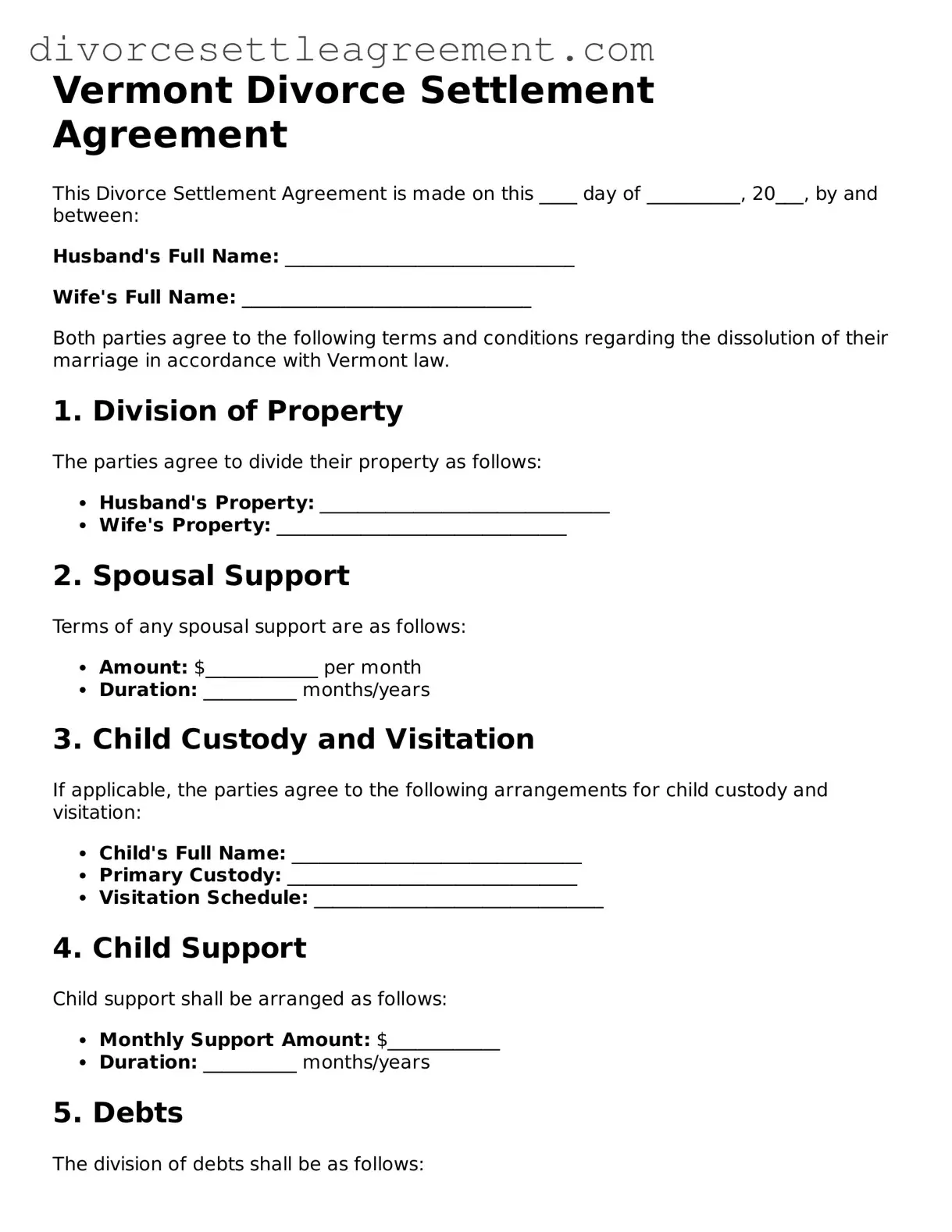What is a Vermont Divorce Settlement Agreement?
A Vermont Divorce Settlement Agreement is a legal document that outlines the terms of a divorce between two parties. It covers key issues such as property division, child custody, child support, and spousal support. This agreement is essential for finalizing the divorce and ensuring that both parties are on the same page regarding their rights and responsibilities.
Who needs to complete this form?
Both spouses involved in the divorce must complete the Vermont Divorce Settlement Agreement. It is crucial for both parties to agree on the terms laid out in the document. If there are children or shared assets, this form becomes even more important to protect everyone's interests.
How do I fill out the Divorce Settlement Agreement?
To fill out the Divorce Settlement Agreement, start by clearly stating your names and the date of the agreement. Next, address each section of the form, detailing how you will divide assets, debts, and responsibilities for children. Be thorough and honest to avoid future disputes. Consider consulting with a lawyer if you have questions about specific terms.
Is the Divorce Settlement Agreement legally binding?
Yes, once both parties sign the Divorce Settlement Agreement and it is approved by the court, it becomes legally binding. This means that both parties are required to adhere to the terms outlined in the agreement. Failing to comply can result in legal consequences.
What if we cannot agree on the terms?
If you and your spouse cannot agree on the terms of the Divorce Settlement Agreement, you may need to consider mediation or seek legal assistance. Mediation can help facilitate discussions and lead to a compromise. If mediation fails, a judge may need to make decisions on contested issues during a court hearing.
Can I modify the Divorce Settlement Agreement later?
Yes, it is possible to modify the Divorce Settlement Agreement after it has been finalized. However, both parties must agree to the changes, and the new agreement must be submitted to the court for approval. Modifications are often necessary due to changes in circumstances, such as job loss or changes in custody arrangements.
Where do I submit the completed Divorce Settlement Agreement?
After completing the Divorce Settlement Agreement, you must submit it to the appropriate family court in Vermont. Make sure to file it along with any other required documents for your divorce case. Keep copies for your records, as you may need them in the future.
